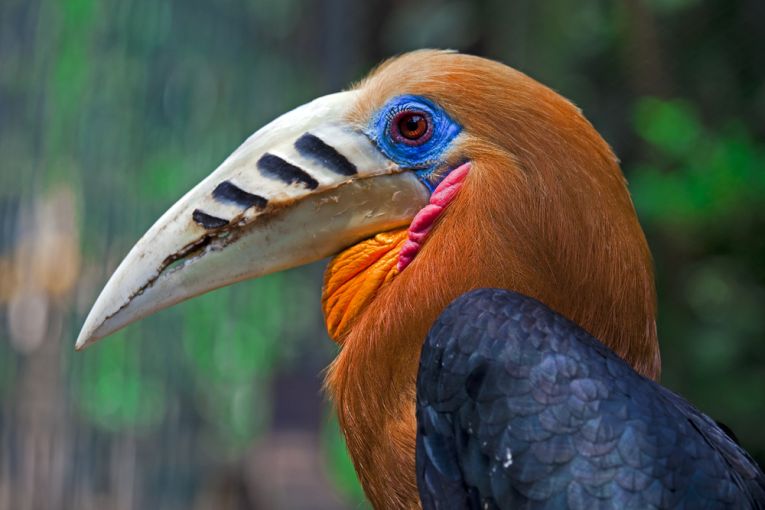In the west of Thailand are many forests on the border with Myanmar. They used to be continuous, impenetrable and rich in biodiversity. Now, parts remain where the "original" forest has survived complete with flora and fauna. 2 reserves in particular present us with the largest conservation area in Mainland Southeast Asia and is one of Thailand's least accessible and least disturbed forest areas. he surprise is that within 150 years these trees and this ecosystem has regrown after destruction possibly more than once.
What people have assumed about the millions of years that some forests have survived is incorrect. People were not organised enough to destroy vast acreages in the past, as they do now. The culprit is the strongest of tropical hurricanes or typhoons. The clue came from a study of regeneration in Huai Kha Khaeng Wildlife Sanctuary (This Sanctuary combines beautifully with its neighbour, Thung Yai Naresuan to form a World Heritage Site). No small Afzelia xylocarpa trees were discovered despite the many large mature 30m specimens around. Tree rings do exist in tropical trees, despite the common misconception, but dry season rings are clear in this species. Peak years appeared during the study, during which almost all the 160 year-olds had grown, close to each other, followed by another - about 60 years ago. This indication of large scale disturbance was puzzling.
The rapid growth spurt in certain rings also showed that light was plentiful. Now how could that have happened? The forest that surrounded the 160-yeaar-old trees was also composed of similar taller and therefore older specimens. This shows another third generation of trees preceded the 160yo trees.
The supposed hurricane is presumed to have hit twice during the time studied. Severe fires, sparked by lightning, may well have followed the destruction because of thee large amount of dead wood left. So, as Mart Vlam of Waiblingen University in the Netherlands has stated, "This seemingly untouched forest has actually undergone severe disruptions in the recent past."
Mart publishes with his 4 colleagues from the University of Melbourne and the Thai National Parks Wildlife and Plant Conservation Department, Bangkok in Forestry Ecology and Management.
The endangered trees themselves are valuable for medicine, for lumber as "pod mahogany", and as makha beads, Their forte is to support the divers tropical forest, dominated by even taller dipterocarps and full also of legumes like the Afzelia Tiger, elephant, 120 other mammals and many other species abound in this protected environment. The woodpeckers have an extraordinary 22 species present, hopefully not affecting the endangered tree! Unique species associations occur in this remnant of a unique biome - the dry tropical forest. The outstandingly-beautiful rufous-cheeked hornbill, Aceros nipalensis, the great banteng, Bos javanicus , or the mall-clawed otter, Aonyx cinerea , represent some of the icons of the now not-so-ancient jungle we used to dream of. They are still there!
However, 28 animal species are internationally threatened, with poaching a major problem. As a refuge for many of these species in the dry Pleistocene glaciations, biodiversity is possibly unmatched here. The problem posed by this revelation on loss of trees due to hurricanes is how did delicate niches survive for these plants and animals? Obviously the vast expanse of forest could explain this, but now we have to consider preventing Thai logging concessions over the nearby border with Myanmar and empowering the many local tribal peoples. They are surely the guardians of this rich resource, and ideally-placed to benefit from new research and tourism benefits.










